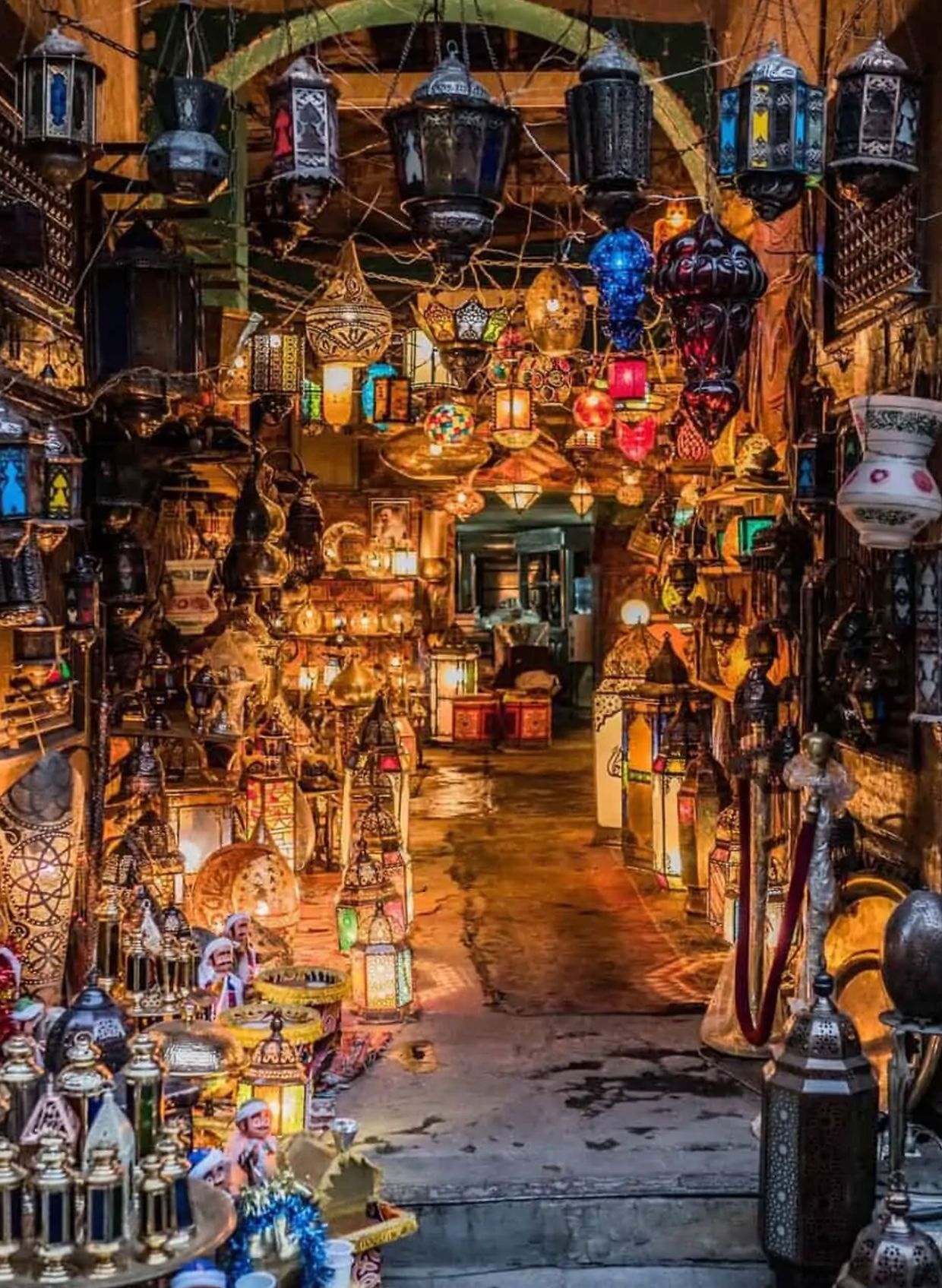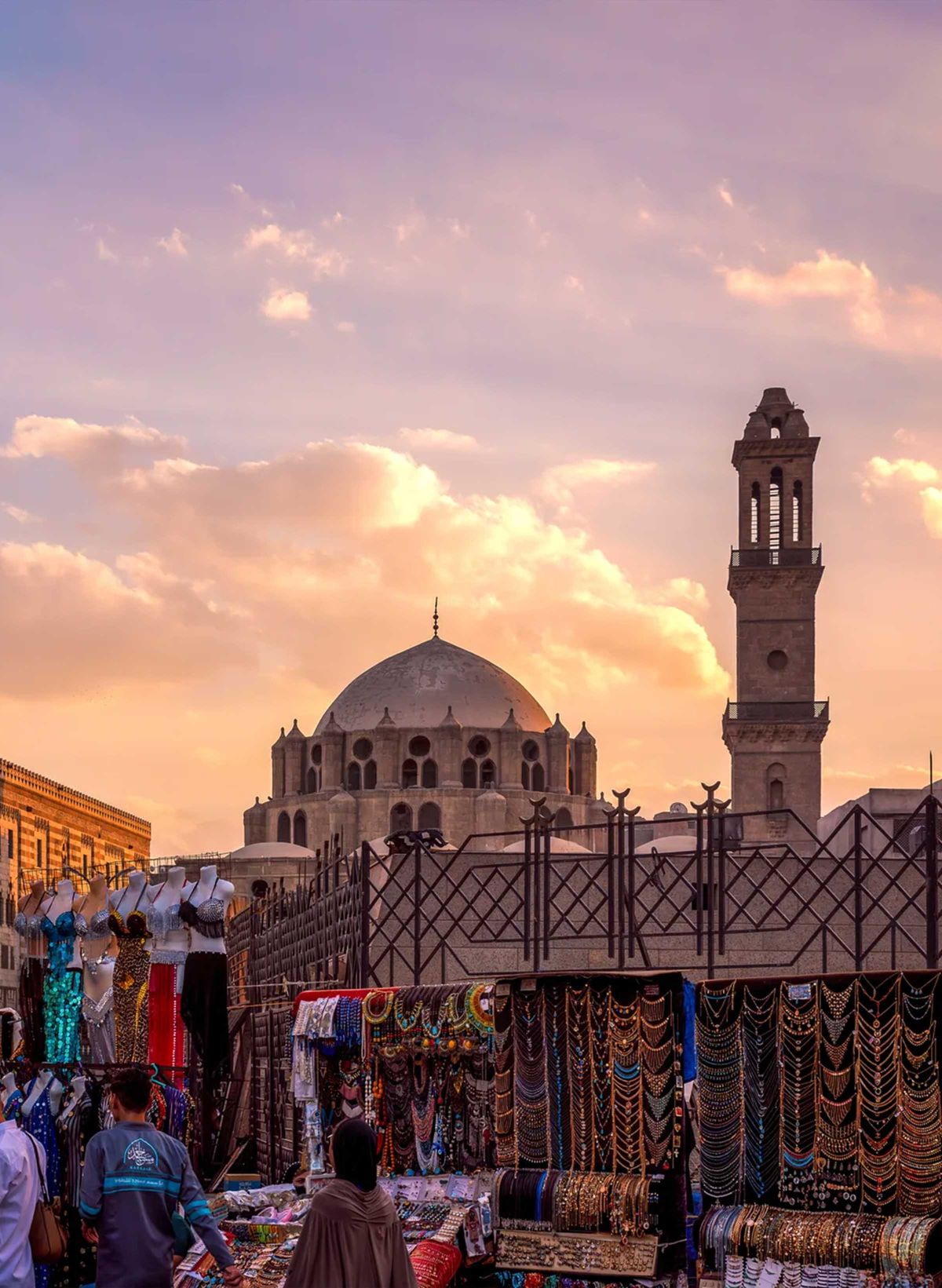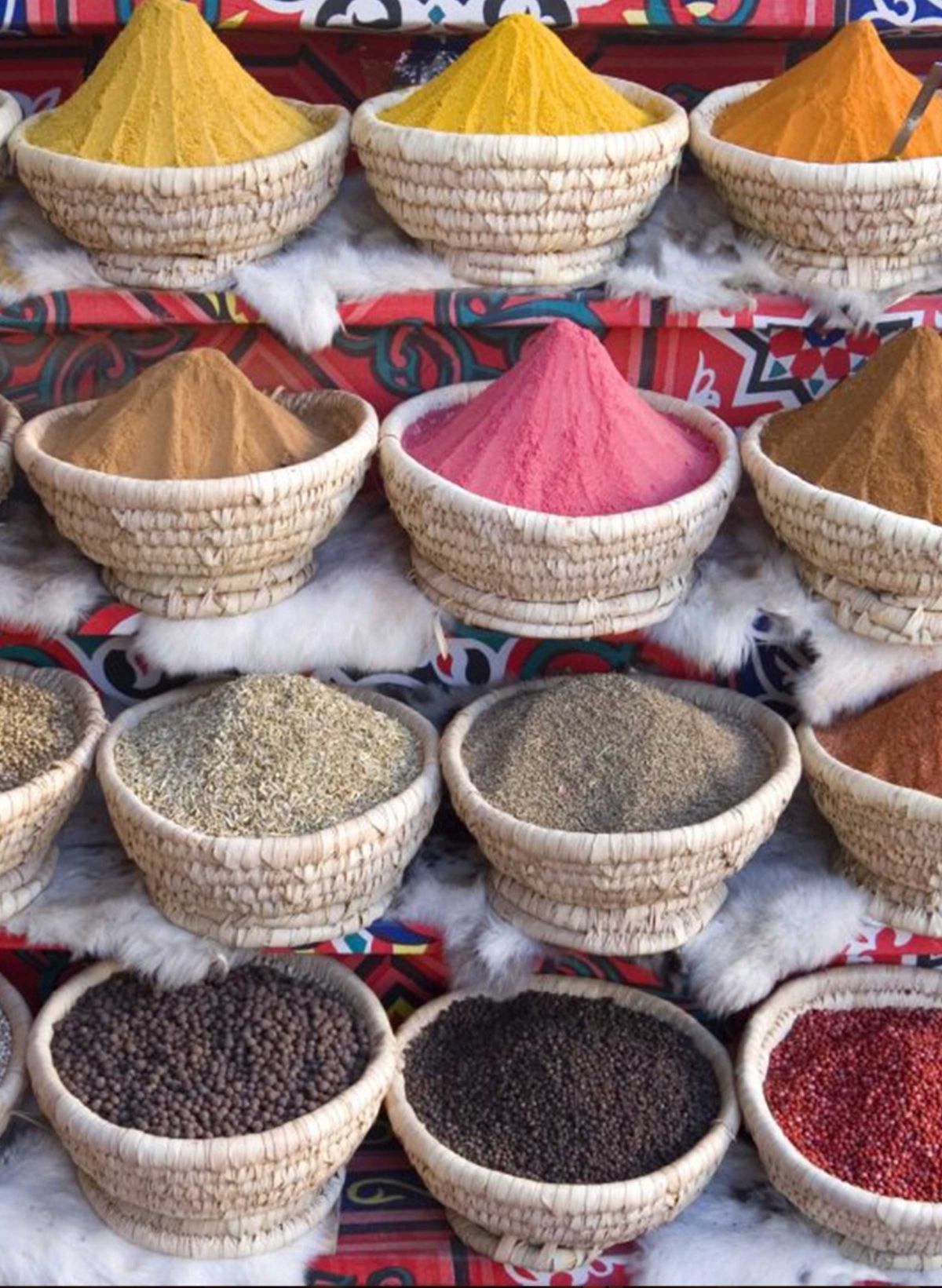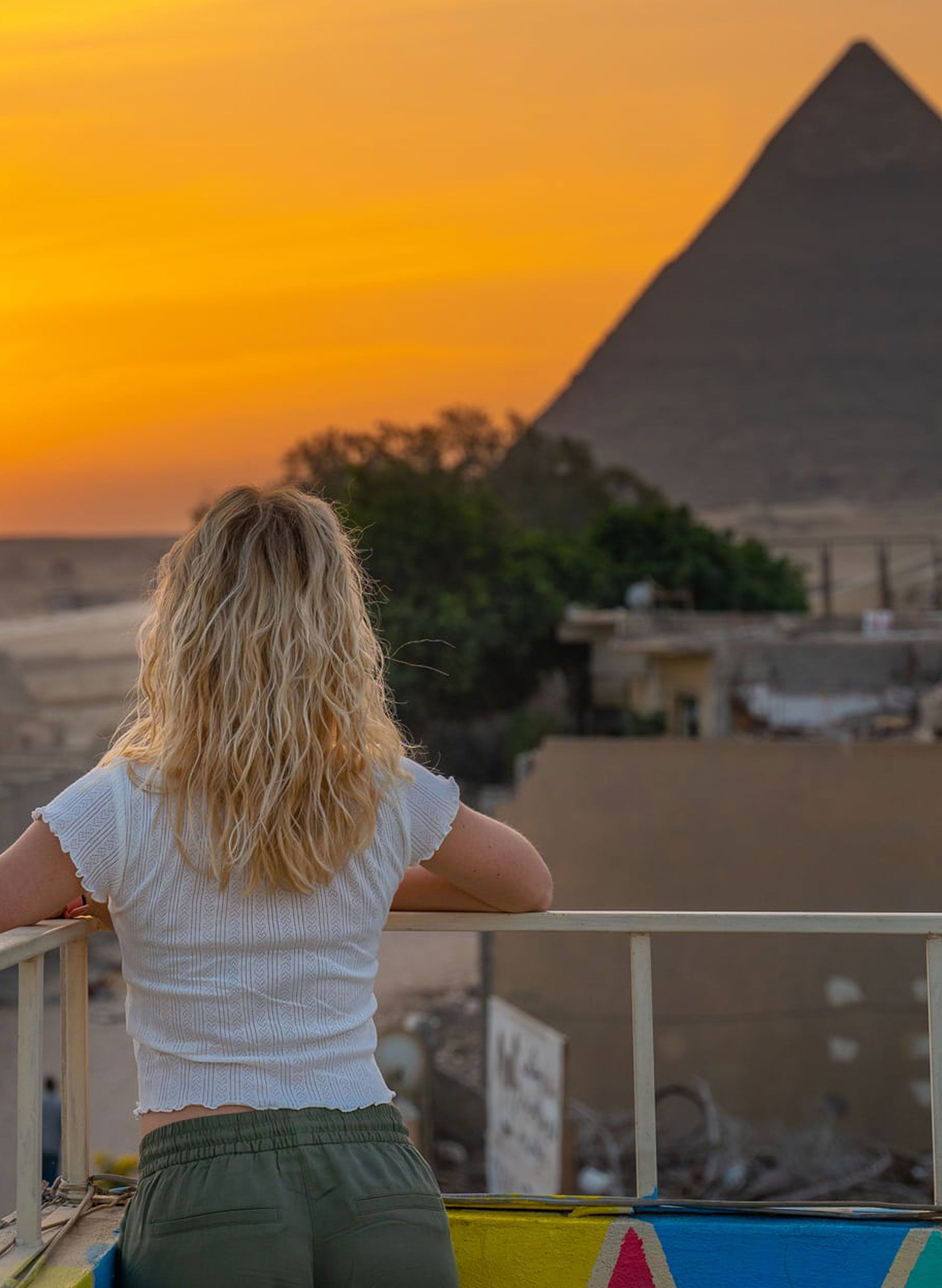
Khan El Khalili: Cairo’s Timeless Marketplace

Tucked away in the heart of Old Cairo, Khan El Khalili is more than just a market—it’s a journey through time. This centuries-old bazaar has been a hub of trade, craftsmanship, and culture since the 14th century, offering visitors a vibrant glimpse into Egypt’s rich heritage.
A Marketplace Like No Other
Wandering through the Khan, you’ll find a maze of narrow alleyways lined with stalls overflowing with colorful fabrics, shimmering lanterns, handcrafted jewelry, and intricate brassware. Whether you’re searching for a one-of-a-kind souvenir or simply soaking in the lively atmosphere, the market is a feast for the senses.
What to Expect
• Authentic Handicrafts: The Khan is famous for its traditional Egyptian goods—think hand-blown glass, silver trinkets, and beautiful calligraphy art.
• Spices and Scents: The air is filled with the aromas of exotic spices, oud perfumes, and freshly brewed tea.
• Bargaining Culture: Haggling is part of the fun! Vendors expect a little back-and-forth, so don’t be shy to negotiate.
• Historic Cafés: A visit isn’t complete without stopping by El Fishawi, Cairo’s most famous café, where poets and writers like Naguib Mahfouz once sat, sipping mint tea.
A Window into Cairo’s Past and Present
Beyond shopping, Khan El Khalili is a place where history and modern life collide. Built during the Mamluk era, the market has welcomed traders and travelers for over 600 years. Today, it continues to be a cultural melting pot, attracting locals, tourists, and artists alike.
Whether you’re looking to buy a treasure or simply take in the buzzing atmosphere, Khan El Khalili is a must-visit destination in Cairo—one that leaves every visitor enchanted by its magic.
The Citadel of Cairo: A Symbol of Diversity and Faith
Perched high above the city, The Citadel of Cairo is more than just a historic fortress—it’s a testament to Egypt’s rich and diverse cultural tapestry. Built in the 12th century by Salah ad-Din (Saladin) to defend Cairo against Crusader invasions, the Citadel has since evolved into a symbol of power, faith, and unity among different ethnic and religious communities.
A Meeting Point of Civilizations
Over the centuries, the Citadel has been home to rulers from various backgrounds, including Arab, Ottoman, and Mamluk dynasties. Each group left its mark, shaping the site into a unique blend of architectural styles and cultural influences.
Religious Diversity at the Citadel
• Islamic Influence: The most striking landmark within the Citadel is the Mosque of Muhammad Ali, a masterpiece of Ottoman architecture. With its grand domes and towering minarets, the mosque is one of Cairo’s most recognizable sites.
• Christian Heritage: Though the Citadel is largely associated with Islamic history, its surroundings include Coptic Christian sites, such as the Hanging Church and the Monastery of Saint Simon (the Cave Church), reflecting the deep-rooted presence of Egypt’s Christian community.
• Jewish History: While no synagogues remain within the Citadel, Cairo once had a thriving Jewish population, many of whom lived in nearby districts, contributing to Egypt’s multicultural identity.
Ethnic Communities and Their Legacy
Egypt’s diverse ethnic makeup—from Arabs and Berbers to Greeks and Turks—played a significant role in the Citadel’s history. Under Ottoman rule, Turkish elites resided within its walls, influencing Cairo’s political and cultural life. Meanwhile, Mamluks of Circassian and Central Asian descent once ruled from within the fortress, shaping Egypt’s military and governance.
The Citadel Today: A Shared Heritage
Today, the Citadel stands as a symbol of unity, attracting visitors from all backgrounds who come to admire its history, breathtaking views, and spiritual significance. Whether exploring its grand mosques, military museums, or ancient gates, the Citadel remains a powerful reminder of Egypt’s centuries-old tradition of coexistence and cultural exchange.
A visit to this iconic landmark is not just a step into history—it’s a journey through the diverse layers that make up Egypt’s identity.






